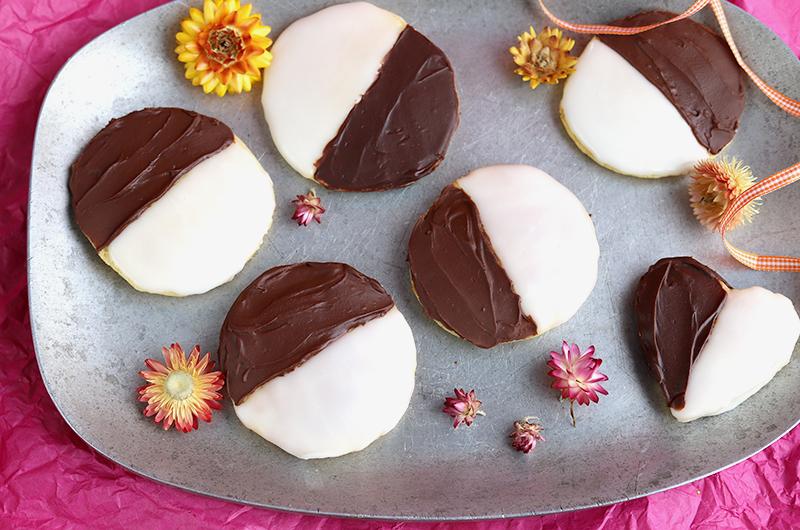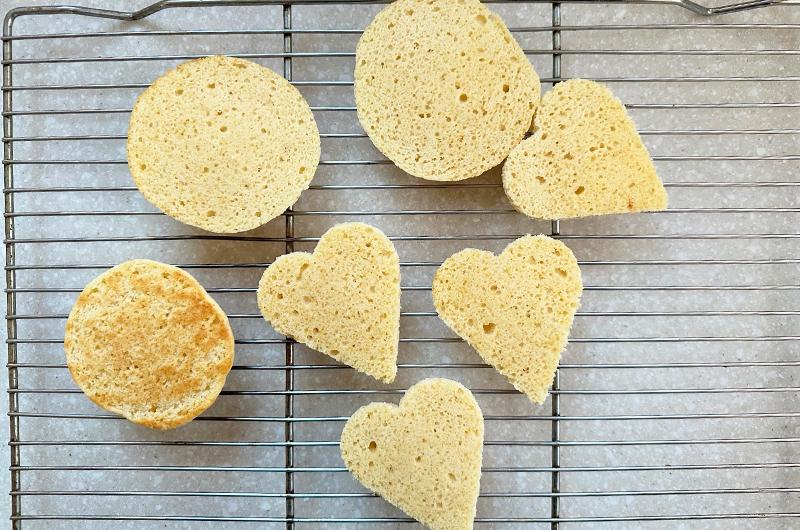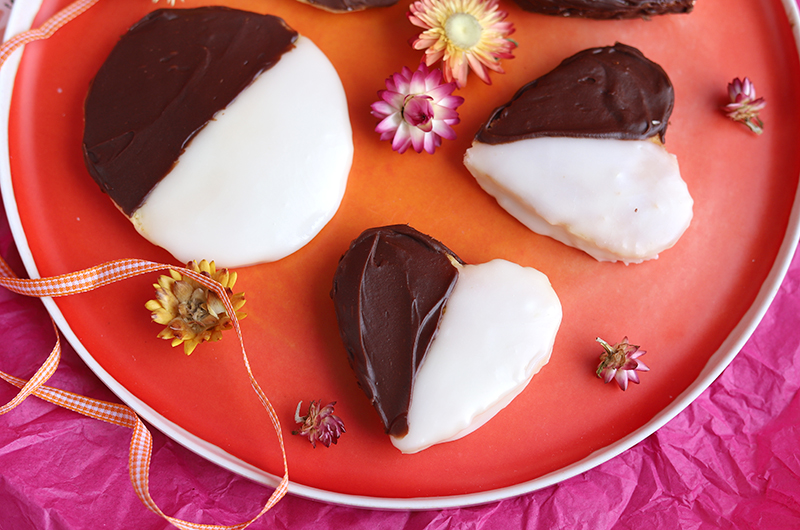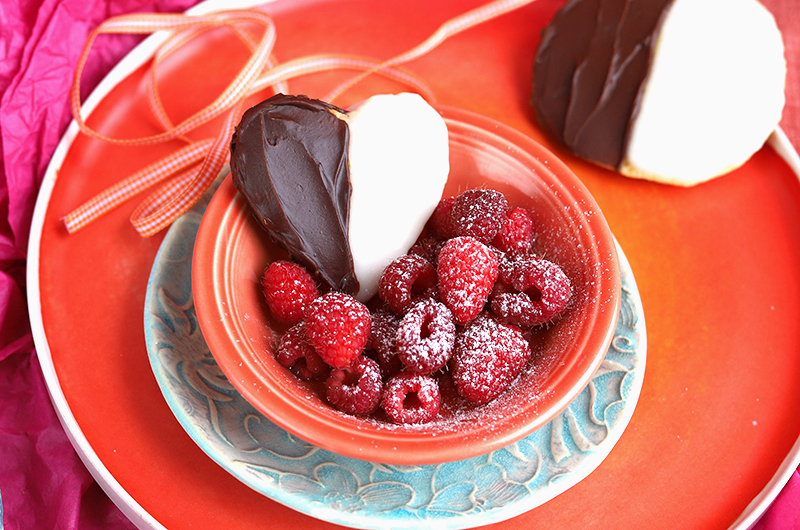In Manhattan, they’re known as Black & Whites. In upstate New York – Half Moons. (In Boston - both!) And these cookies – which are really more like little frosted cakes – show up in other regions as Half & Halfs, Harlequins, or Amerikaners. (There are some differences - Half Moons generally have thick frosting on the dome side, Black & Whites have royal icing on the flat side.) But no matter what you call them, these popular treats aren’t just for bakery splurges – they’re easy to make at home. And they feel special. You can even turn the traditional large moon shape into a heart for Valentine’s Day if you’ve got a heart-shaped cookie cutter.
The easy batter for our New York-style Black & Whites, dolloped on lined sheet trays, bakes into mounded rounds. Flipped over, the cakes are frosted on their flat side using two flavors of confectioners’ sugar-based frosting – one vanilla-scented and one chocolate. And it may look like you need to be a decorating pro to frost these, but you don’t. They needn’t be perfect (that’s part of the charm), and a small offset spatula is all you need to spread the icing.
It's important to get the consistency of the confectioners’ sugar-based icing (aka royal icing) just right, but I’ve given you tips on how to adjust as necessary to get the perfect spreadable-but-not-too-runny icing.
Read all the Kitchen Tips below before you get started. Note that mixing and baking the cake batter is quick; frosting takes a bit longer and you’ll want to let the icing set for an hour before serving.
Kitchen Notes

Removing cookies from sheet pan
As noted in the recipe, you can use either nonstick liners or parchment paper to bake the cookies. Remove the cookies from the nonstick liners using a wide offset metal spatula. Cookies baked on parchment won’t lift off cleanly if you use an offset spatula, which will leave them with a rough finish on the flat side. Instead, use your fingertips to gently lift the cookies from the parchment paper. Flip cookies to flat side when cooling on rack.
Varying Shapes
Smaller
Traditionally, Black & Whites are large rounds but they can be made smaller. Keep in mind that your yields will vary depending on the size, but I’ve found that the baking times will stay fairly similar, regardless of size. As always, follow the doneness test (visual cues).
Cut outs

For special occasions, use large cookie cutters to make festive shapes (we used hearts for Valentine’s Day). When the cookies are cooled completely (but not iced), arrange them flat side down (mounded side up) on a cutting board and use a cookie cutter to stamp out shapes. Turn them flat-side up and ice them as directed.
Full Moons
Instead of frosting with two flavors, choose your favorite – chocolate or vanilla – to make them “full moons.”
Icing
The consistency will vary from batch to batch depending on the brand of confectioners’ sugar and even the weather. The goal is spreadable but not runny. For the best results, take your time and proceed slowly doing small test samples on the counter, parchment or a cutting board.
If the mixture is thick and paste-like, you’ll need to add more water to loosen and smooth out the icing. Add more water, just a bit more at a time, stirring it in and testing the thickness. Likewise, if the mixture is too thin and runny, stir in more confectioners’ sugar (sifted if lumpy). The correct consistency should be medium-thick, just barely pourable, and able to spread thickly but easily.
Storing
Frosted cookies are best stowed in single layers (so as not to mar the icing), covered and at room temperature. Wide storage containers, about 2-inches deep, that come with a lid are great. You can also use two half sheet pans. Line one with parchment and arrange the cookies close together. Invert the second sheet pan and place on top. If there are gaps at the seam, cover with plastic wrap.








